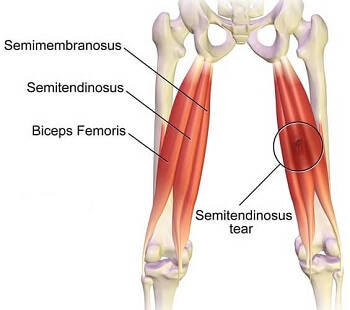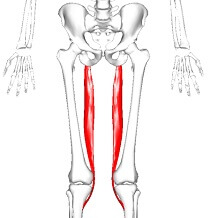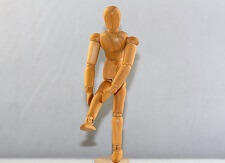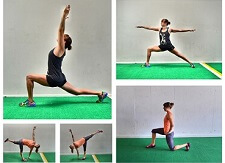- Home
- Knee Joint Anatomy
- Muscles
- Semitendinosus
Semitendinosus
Written By: Chloe Wilson, BSc(Hons) Physiotherapy
Reviewed by: KPE Medical Review Board
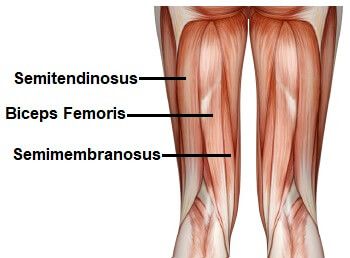
Semitendinosus is one of the hamstring muscles that runs down the posteromedial aspect of the thigh.
It is so named due to its long tendon of insertion at the back of the knee.
It runs very close to the other two hamstring muscles, arising from a common point with biceps femoris and running superficial to semimembranosus.
Semitendinosus works with the other hamstring muscles to bend the knee and plays an important role in stability.
Origin & Insertion
Semitendinosus and biceps femoris share a common tendon origin arising from the lower medial facet of the lateral section of the ischial tuberosity.
After a short distance, the tendons divide and semitendinosus forms a fusiform muscle belly (wide spindle shape like a feather) before quickly giving way to a long tendon.
This tendon passes downwards and slightly medially (inwards). It runs behind the medial femoral condyle, being separated from the medial collateral ligament (MCL) by a bursa (small fluid-filled sac), and attaches to a vertical line on the medial tibial condyle.
It sits just behind the insertion of the Sartorius muscle and just behind and below the attachment of the Gracilis tendon.
These three tendons form the Pes Anserinus, thus named due to the appearance resembling a webbed “goose’s foot”. Underneath these tendons site the Pes Anserine bursa, a small fluid-filled sac which helps to reduce friction which can often get inflamed if the hamstrings are tight.
Functions Of Semitendinosus
Semitendinosus works with the other hamstring muscles to help:
- Extend the hip when the trunk is bent forwards for example when straightening up from bending down to the floor
- Bend the knee
- If the knee is in a bent position, it will medially rotate the knee (turn it inwards).
- If the foot is fixed on the floor, semitendinosus will laterally rotate (turn outwards) the pelvis and femur on the tibia.
The hamstrings also play an important role in stability, working with the abdominal muscles and glutes to control the fine balancing and position of the pelvis when standing such as the anteroposterior tilt of the pelvis and lumbar lordosis.
They also control the forward movement of the tibia during the swing phase of walking and running, working eccentrically to decelerate knee extension.
Common Problems
As with any muscle, semitendinosus can develop problems in either the muscle belly (the main bulk of the muscle) or in the tendon. Common problems that can develop in senitendinosus are:
- Muscle Tear: Overstretching or overloading of semitendinosus can result in a hamstring strain
- Muscle Weakness: a lack of strength and/or endurance in the muscle
- Muscle Tightness: shortening of the semitendinosus muscle which can place pressure on the pes anserine bursa resulting in bursitis
- Tendinitis: inflammation or degeneration of the semtendinosus tendon leads to hamstring tendonitis which causes pain behind the knee
If you have a problem in your semitendinosus muscle, or indeed any of your hamstrings, check out these articles:
- Hamstring Stretches: Try our simple test to see if you would benefit from hamstring stretches and then choose from a range of stretching exercises to improve your flexibility
- Hamstring Strengthening Exercises: Loads of great ways you can strengthen the hamstrings effectively in your own home
- Pes Anserine Bursitis: Find out what happens when there is inflammation of the pes anserine bursa
Summary
Muscle Group: Semitendinosus is one of the three hamstring muscles
Action: Knee flexion and extension, hip extension
Origin: Lower medial facet of the ischial tuberosity
Insertion: Medial surface of the medial tibial condyle
Nerve Supply: Tibial branch of the sciatic nerve (L5, S1, S2)
Special Features: At its insertion, it forms part of the pes anserinus, along with tendons from the Sartorius and Gracilis muscles
Other Knee Muscles
Page Last Updated: 05/07/23
Next Review Due: 05/07/25
